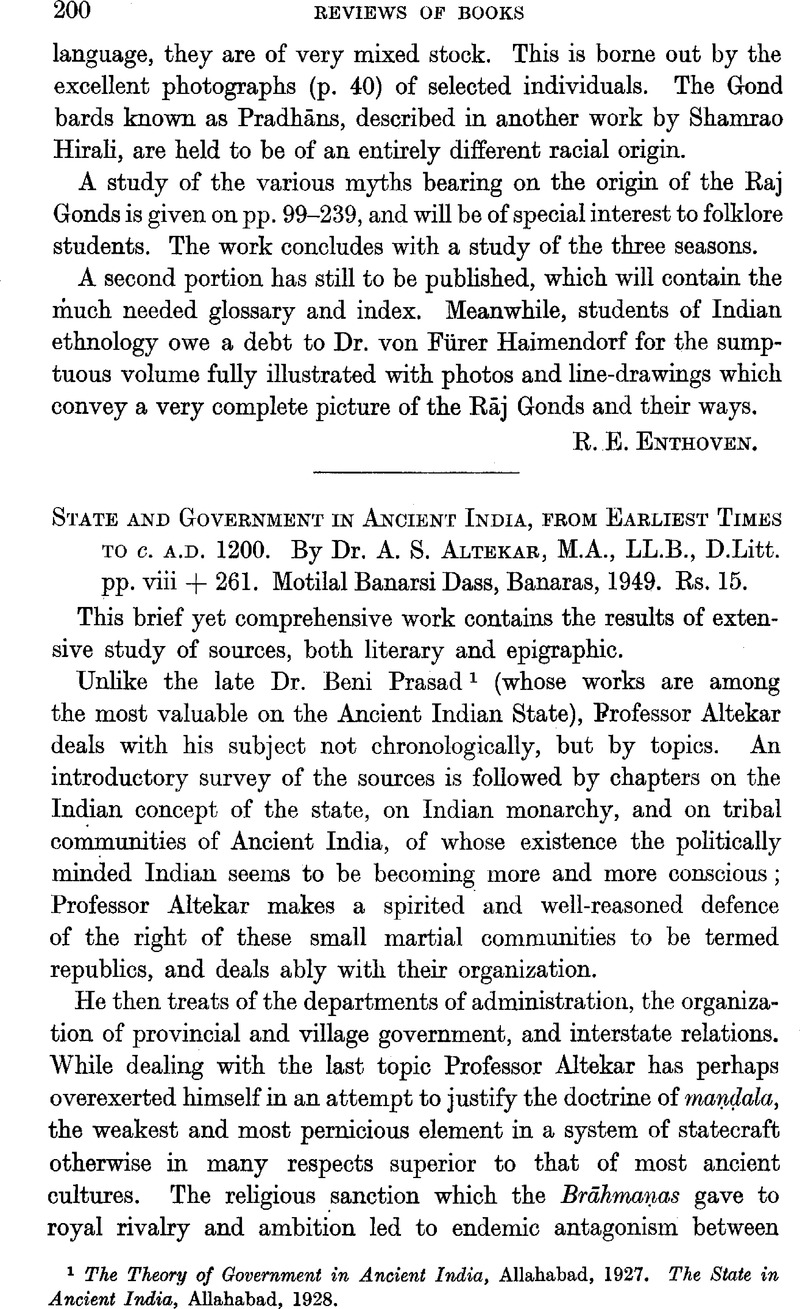No CrossRef data available.
Article contents
State and Government in Ancient India, from Earliest Times to c. A.D. 1200. By DrA. S. Altekar, M.A., LL.B., D.Litt. pp. viii + 261. Motilal Banarsi Dass, Banaras, 1949. Rs. 15.
Review products
Published online by Cambridge University Press: 15 March 2011
Abstract

- Type
- Reviews of Books
- Information
- Copyright
- Copyright © The Royal Asiatic Society 1950
References
page 200 note 1 The Theory of Government in Ancient India, Allahabad, 1927.Google ScholarThe State in Ancient India, Allahabad, 1928Google Scholar.
page 202 note 1 Dr. P. V. Kane, the best living authority on Smrti literature, after leaving the matter unsettled in the second volume of his great History of Dharmaśāstra (Poona, 1941, pp. 865–9), has decided in his third volume (Poona, 1946, pp. 495–6) that ”the State was deemed to be the owner of all lands as a general proposition, but … where individuals or bodies of persons had been in long possession … the ownership of the State was qualified and restricted only to the recovery of a tax or share of crops”Google Scholar.
page 202 note 2 Grhahşetre ca dve drste vāsahetū kuţumbinām. Tasmāt tu n'ākşiped rājā, bhumer ndhipatir hi suḥ, xi, 42.


